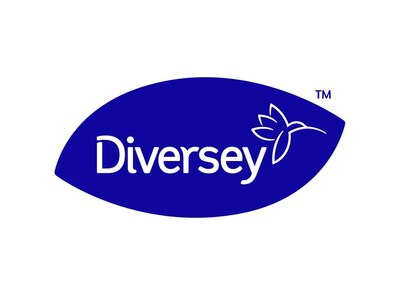UTRECHT,
Netherlands, June 7, 2023
/PRNewswire/ -- Diversey Holdings, Ltd. (NASDAQ: DSEY), a leading
provider of hygiene, infection prevention, and cleaning solutions
has demonstrated in a recent study by Purdue
University that disinfectant efficacy against Candida
auris (C. auris) varied significantly with both product
formula and contact time having a significant impact on
disinfectant efficacy. The study suggests that healthcare
facilities wanting the best hygiene outcomes should use
disinfectants with an EPA approved label claim against C. auris and
should ensure the surface is kept wet for the contact time listed
on the label.

The Diversey funded, peer reviewed Voorn et al. study, selected
for its impact on the hygiene and disinfection industry and
published in the Scientific Reports journal by Voorn et al. is
part of Diversey's research into disinfection performance to study
environmental surfaces and patient care equipment in healthcare
facilities. Prior to this research, little was known about
disinfectant efficacy against C. auris when wiping larger surfaces,
such as would be found in healthcare facilities.
In healthcare, the fungus Candida auris (C. auris) is an
emerging pathogen of concern because it can be found on
environmental surfaces and is generally more resistant to
disinfectants than other Candida species. The authors tested 5 EPA
registered disinfectants on a 1
m2 surface that was intentionally contaminated
with C. auris. The surface was wiped with a pre-wetted disinfectant
wipe and the efficacy against C. auris was measured at contact
times from 30 seconds to 10 minutes. There were statistically
significant differences in efficacy between different contact times
and disinfectants, showing that when healthcare facilities
disinfect environmental surfaces, the choice of disinfectant and
amount of time the disinfectant keeps the surface wet are likely to
have an impact on the amount of C. auris remaining on the surface
after disinfection.
Environmental surfaces and patient care equipment in healthcare
facilities are routinely contaminated with pathogenic
microorganisms, and the standard intervention to treat most
healthcare environmental surfaces would be to wipe the surface with
an US-EPA approved disinfectant. By wiping a larger surface
(1 m2) and testing 5
different commercially available disinfectants used in healthcare
facilities (2 with a C. auris claim, 3 without the claim), the
authors concluded that there are significant differences in
efficacy between products and how keeping the surface wet during
disinfection impacted the efficacy.
Visit the Scientific Reports journal for more information
on this research
.About Diversey
Diversey's purpose is to go beyond clean to take care of what's
precious through leading hygiene, infection prevention, and
cleaning solutions. We develop and deliver innovative products,
services, and technologies that save lives and protect our
environment. Over the course of a century, the Diversey brand has
become synonymous with product quality, service, and innovation.
Our fully-integrated suite of solutions combines patented
chemicals, dosing and dispensing equipment, cleaning machines,
services, and digital analysis. We are a trusted partner; serving
more than 85,000 customers in over 100 countries with a network of
about 9000 employees globally.
For more information, visit https://diversey.com or follow us on
LinkedIn, Facebook, or Twitter @diversey.
Logo -
https://mma.prnewswire.com/media/1838402/4072565/Diversey_Logo.jpg
 View original content to download
multimedia:https://www.prnewswire.com/news-releases/new-study-from-diversey-shows-that-contact-time-and-disinfectant-formulation-has-a-significant-impact-on-the-efficacies-of-disinfectant-towelettes-on-hard-non-porous-surfaces-301844680.html
View original content to download
multimedia:https://www.prnewswire.com/news-releases/new-study-from-diversey-shows-that-contact-time-and-disinfectant-formulation-has-a-significant-impact-on-the-efficacies-of-disinfectant-towelettes-on-hard-non-porous-surfaces-301844680.html
SOURCE Diversey